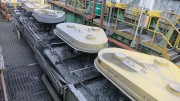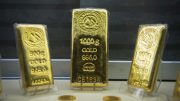The following release from the World Gold Council details global gold demand in the first quarter of 2017. The full Gold Demand Trends report is available for free at www.gold.org.
Global gold demand in the first quarter of 2017 was 1,034 tonnes (33.2 million oz.) in an 18% decline compared to the record first quarter of 2016, according to the World Gold Council’s latest Gold Demand Trends report.
Inflows into exchange-traded funds (ETFs) totalled 109 tonnes, (3.5 million oz.) which, although solid, were a fraction of last year’s near-record inflows.
Slower central bank demand also contributed to the weakness.
Bar and coin investment, however, was healthy, at 290 tonnes — an increase of 9% year-on-year — while demand firmed slightly in both the jewellery and technology sectors.
Highlights
Inflows into gold-backed ETFs of 109 tonnes were largely concentrated in Europe. Although inflows were just one-third of the extraordinary levels seen in first-quarter 2016, demand was firm. European-listed products were the most popular, due to continued political fragility in the region.
Chinese investors were crucial to investment in gold bars and coins, which grew 9% to 290 tonnes year-on-year. Chinese buyers were attracted by the momentum behind the price rise ahead of the seasonally important Chinese New Year.
First-quarter jewellery demand was 481 tonnes, marginally up on first-quarter 2016. Gains in India fuelled the slight year-on-year increase. But demand remains relatively weak in a historical context, 18% below the five-year quarterly average.
Indian consumers enjoyed a period of relative stability in the domestic market, lifting demand 15% year-on-year to 124 tonnes. Continued remonetization by the Reserve Bank of India buoyed consumer sentiment, which encouraged demand ahead of the auspicious wedding season, albeit from a low base.
Central bank demand continued to slow, with 76 tonnes added to reserves. This was down 27% on first-quarter 2016. China’s purchasing program was on pause during the quarter as its foreign exchange reserves remained under pressure.
Total supply reached 1,032 tonnes this quarter in a 12% drop, compared with the first quarter of 2016. This mostly came from a 21% fall in recycling to 283 tonnes and continued net de-hedging of 15 more tonnes by producers. The drop in recycling demonstrates a return to more normal levels, after sharp price movements drove exceptional levels in first-quarter 2016.
Mine production of 764 tonnes was little changed from first-quarter 2016 (768 tonnes), and in line with the expectation that production would stay steady before tailing off.





Be the first to comment on "Facts ‘n’ Figures: Gold demand down 18% in Q1"